How to Make Digital Art Almost 3d How to Make 2d Digital Art Almost 3d
Generative Art Guide:
Examples, Software and Tools to Make Algorithm Art
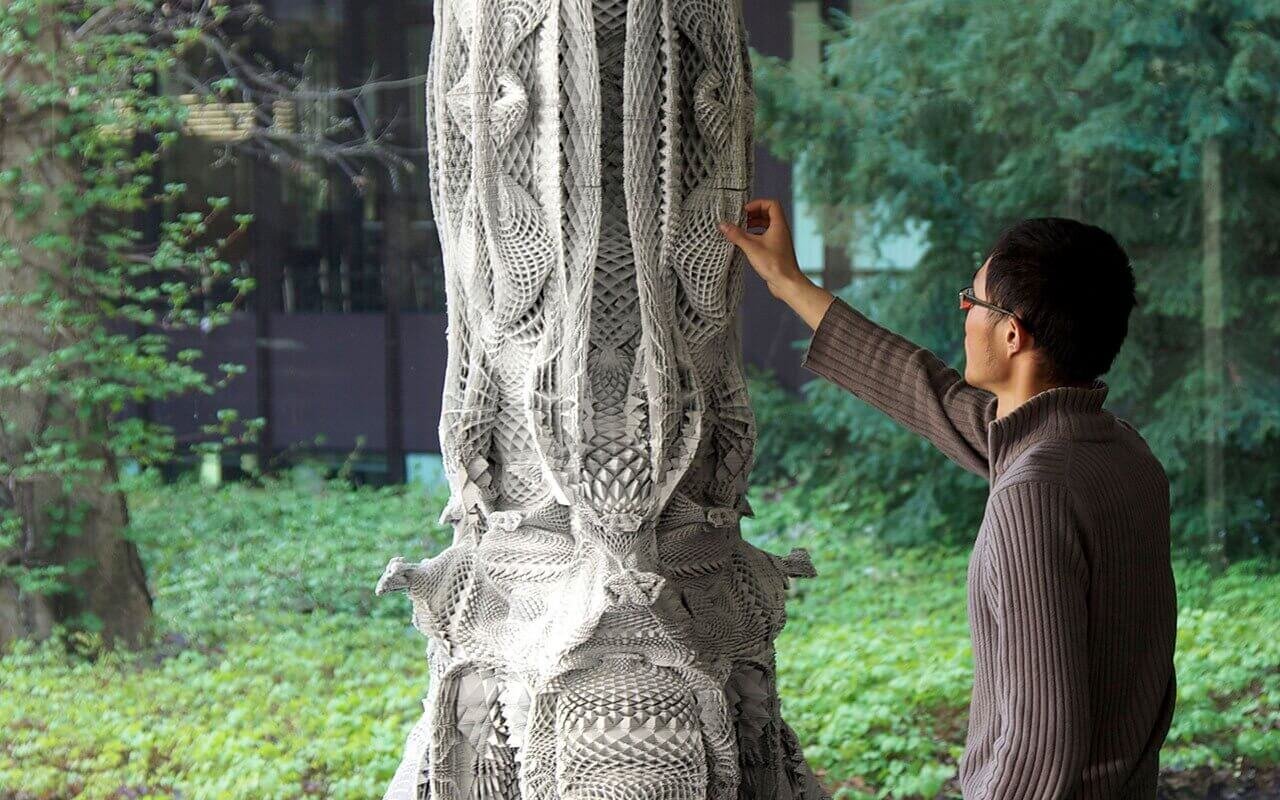
Generative Column Blueprint, created with digital manufacturing by Michael Hansmeyer. In 2010, Michael Hansmeyer generated architectural columns in a project called "Subdivided Columns – A New Order (2010)". The piece explored how the elementary procedure of repeated subdivision can create elaborate architectural patterns. Rather than designing whatever columns directly, Hansmeyer designed a process that produced columns automatically. The process could be run once more and again with unlike parameters to create endless permutations, a hallmark of generative design.
What is Generative Art?
Generative Art is a process of algorithmically generating new ideas, forms, shapes, colors or patterns. Commencement, you create rules that provide boundaries for the creation procedure. So a reckoner follows those rules to produce new works on your behalf.
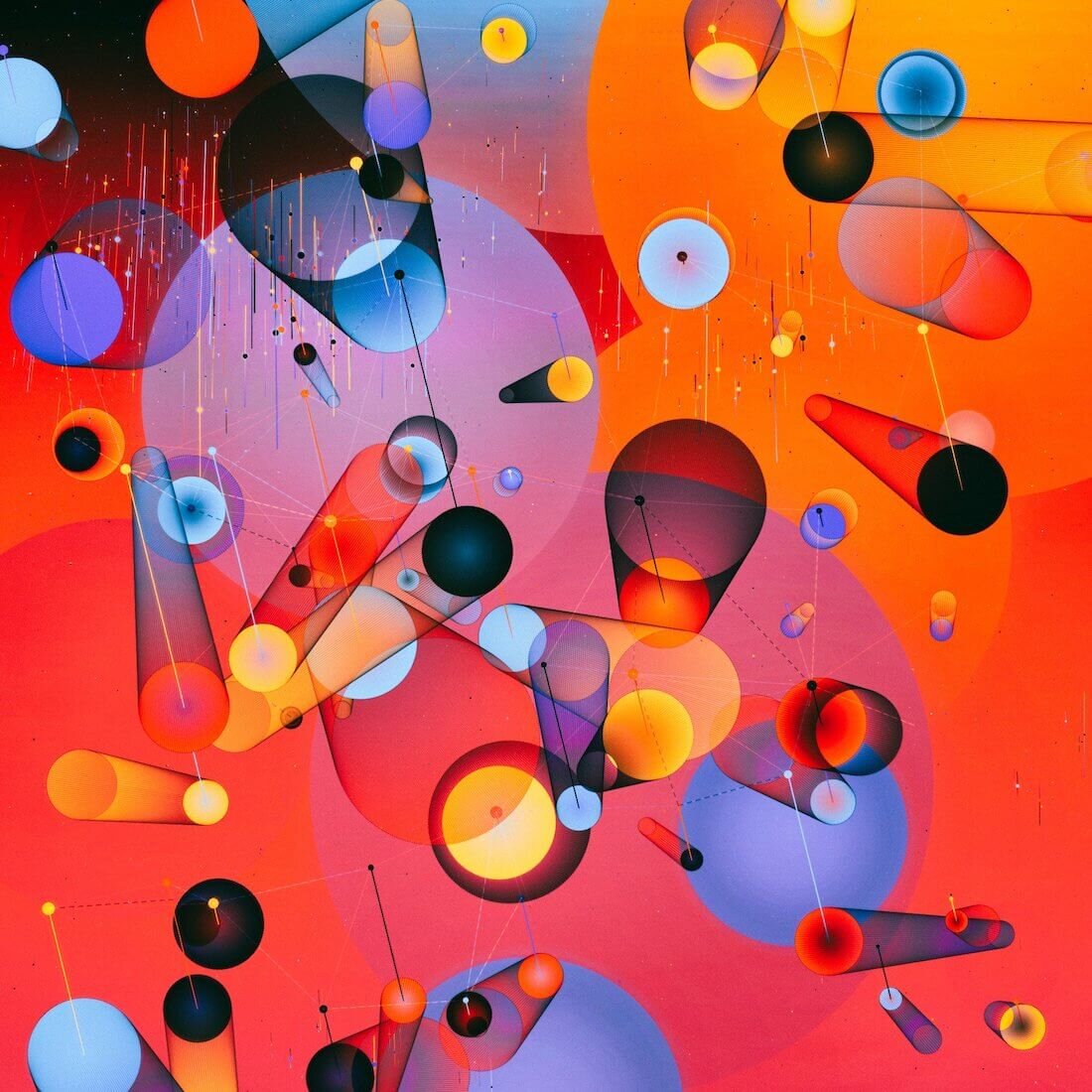
Generative Art by Manolo Gamboa Naon, an Argentinian artist who uses algorithmic tools including Processing to create fine art.
In contrast to traditional artists who may spend days or even months exploring ane idea, generative code artists use computers to generate thousands of ideas in milliseconds.
Generative artists leverage modern processing power to invent new aesthetics – instructing programs to run inside a fix of artistic constraints, and guiding the procedure to a desired result.
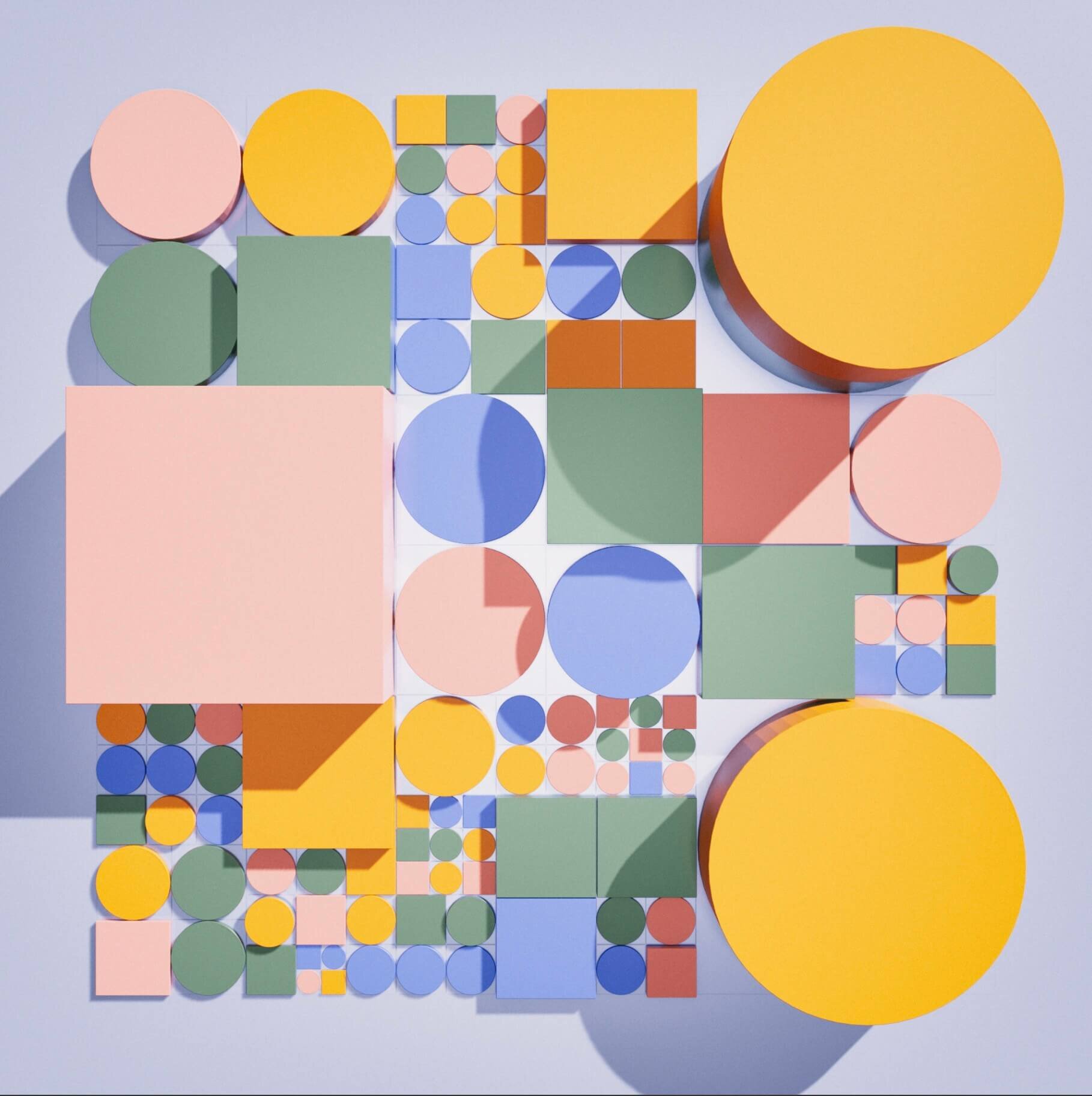
Generative Fine art past Manolo Gamboa Naon.
This method vastly reduces the exploratory phase in fine art and design, and oftentimes leads to surprising and sophisticated new ideas.
Our favorite online grade for generative fine art:
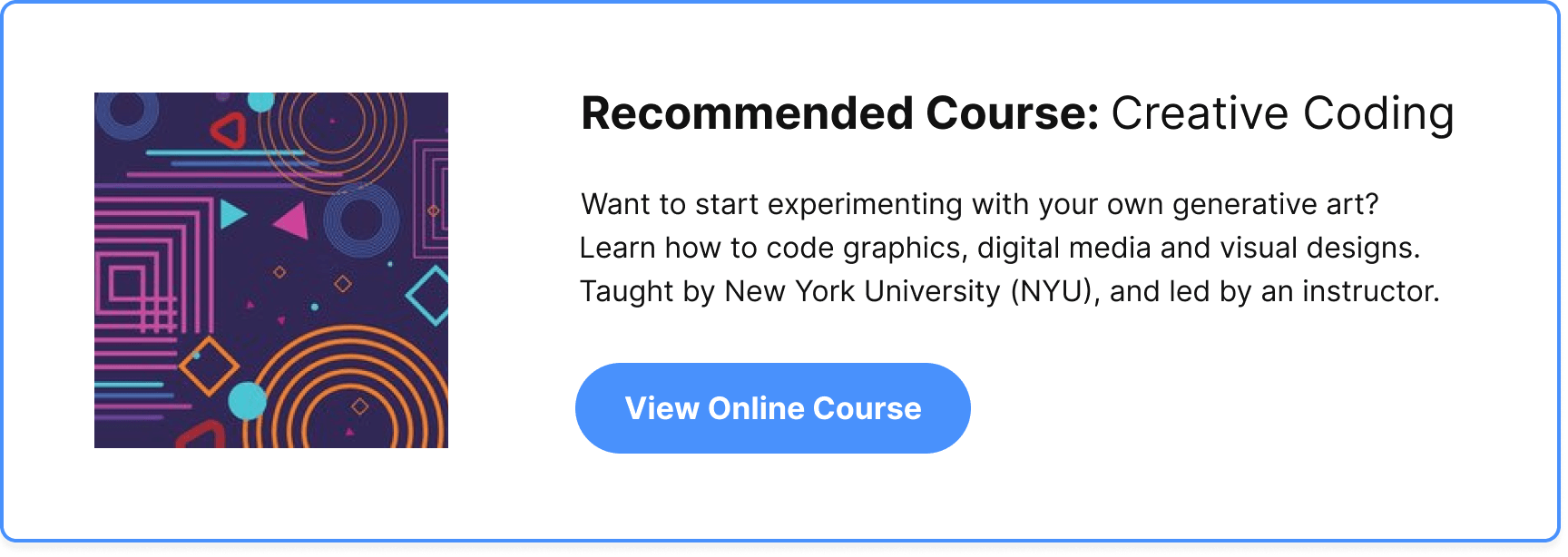
If your goal is to make your ain generative art, nosotros have 2 recommendations to larn how:
-
The popular online course Artistic Coding by New York University is fantastic.
-
The businesslike book The Nature of Code is an excellent guide on the topic too.
Now let'southward explore some examples below.
Generative Art Case: Michael Hansmeyer
Michael Hansmeyer is an architect who considers Generative Blueprint every bit "thinking virtually designing not the object — but a process to generate objects."
The process allows for more artificial serendipity — the happy accidents and novel ideas that commonly take time to stumble upon.
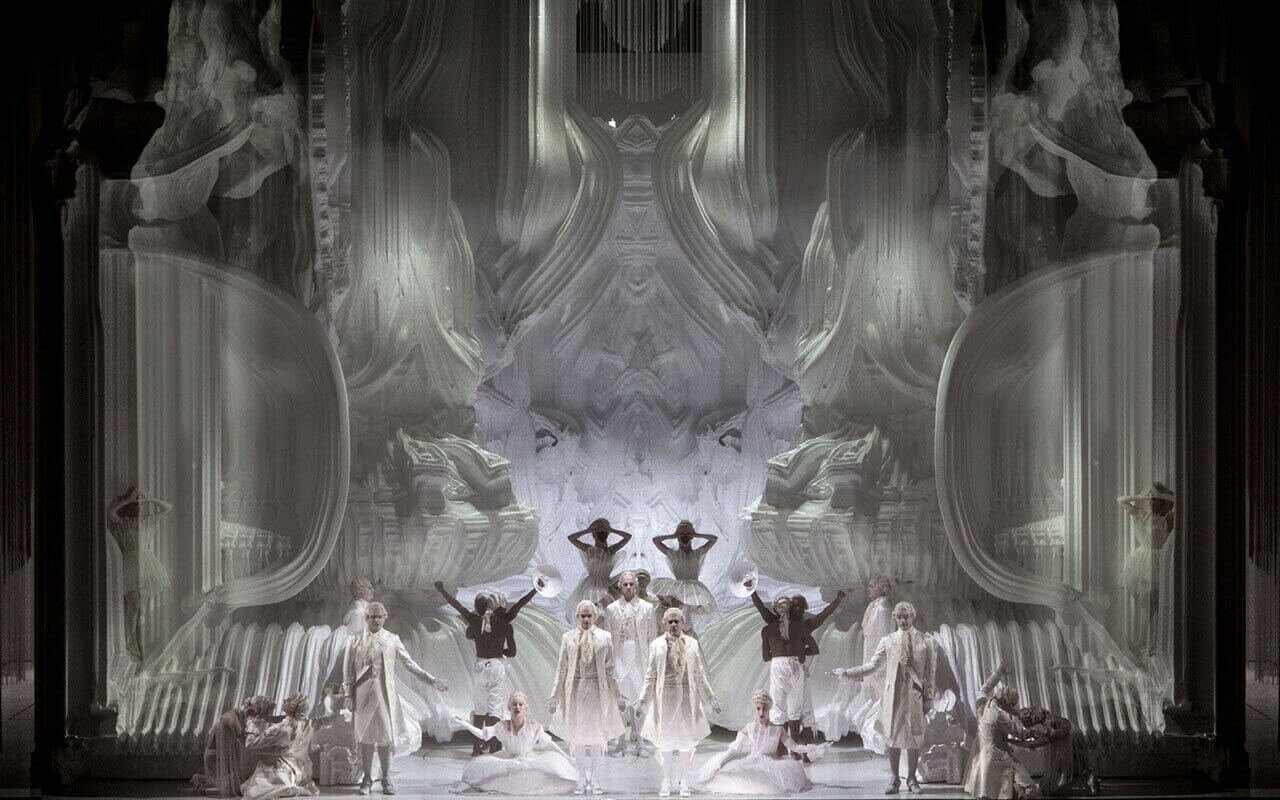
Generative Architecture by Michael Hansmeyer. In this striking example of Computational Architecture, a grotto set was designed for Mozart's opera. (2018).
Hansmeyer used generative pattern to help create the grotto set up for Mozart's opera in the prototype above.
Past using computational tools to explore, optimize and examination creative design ideas apace, artists similar Hansmeyer are maximizing the opportunity for creativity.
"The pattern procedure strikes a rest between the expected and the unexpected, between command and relinquishment," explains Michael Hansmeyer. "While the processes are deterministic, the results are not foreseeable. The figurer acquires the power to surprise us."

Muqarnas, by Michael Hansmeyer. Muqarnas are elaborate ornamental vaultings, and some of the earliest and most impressive examples of a dominion-based architectural blueprint. Using advances in computational design and digital fabrication, Hansmeyer invites u.s.a. to revisit these typologies. His generative art process allows him to create objects of exceptional breadth and depth; countless permutations of designs with a richness of particular that tin once again evoke marvel, curiosity and bewilderment of these traditional architectural wonders.
In "Platonic Solids" beneath, Hansmeyer takes the most primitive forms, the platonic solids, and repeatedly employs 1 single operation — the division of a course'south faces into smaller faces — until a new form is produced.
Researcher and professor Margaret Boden estimates that "95% of what professional person artists and scientists practise is exploratory. Perchance the other 5% is truly transformational creativity." Generative systems are helping to explore much broader basis faster than ever before.
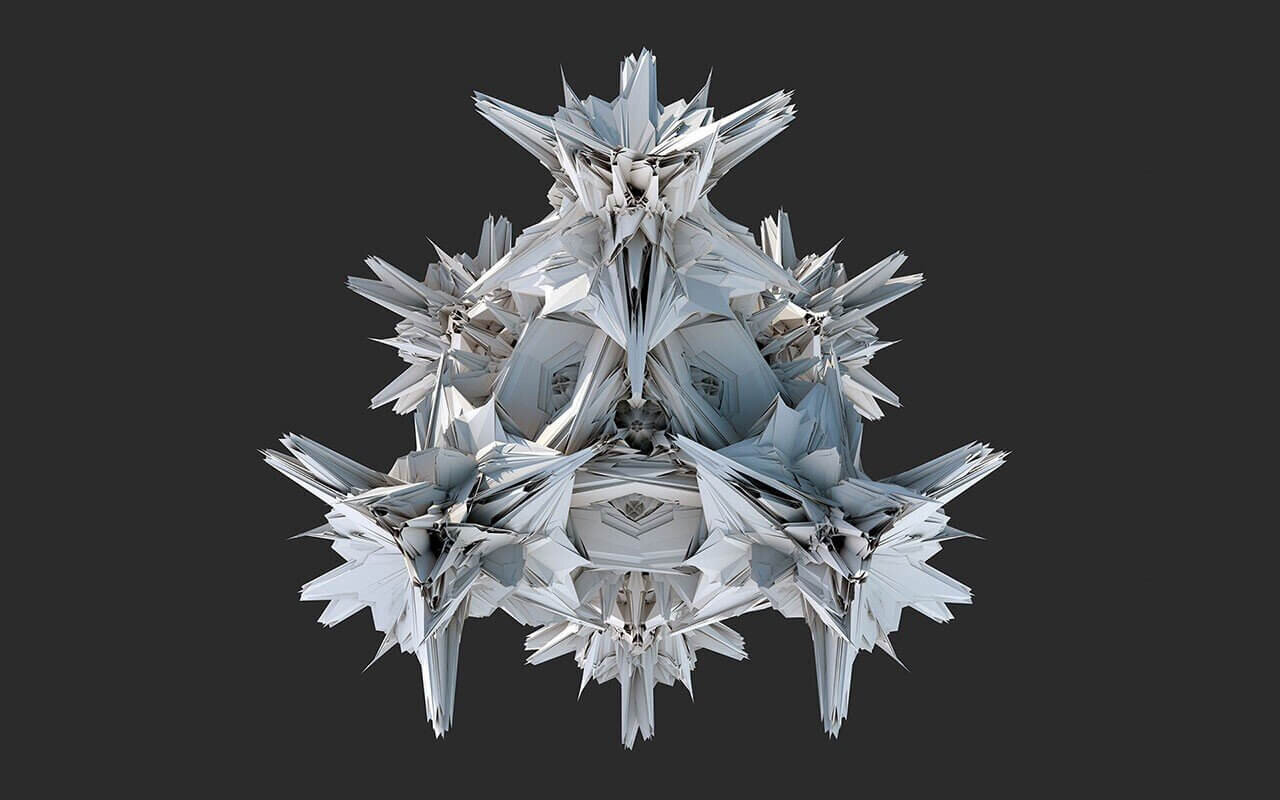
Platonic Solids, by Michael Hansmeyer.
"Generative art is the ceding of control by the artist to an autonomous system," explains Cecilia Di Chio from the volume Applications of Evolutionary Computation.
"With the inclusion of such systems equally symmetry, pattern, and tiling i tin can view generative art as beingness old equally art itself. This view of generative art as well includes 20th century take a chance procedures as used by Cage, Burroughs, Ellsworth, Duchamp, and others."
Generative Art Instance: Anders Hoff
Anders Hoff (a.grand.a. inconvergent on Twitter) is a generative creative person who is fascinated past patterns. He often finds it useful to offset with a highly organized structure and to then look for ways to gradually disrupt it.
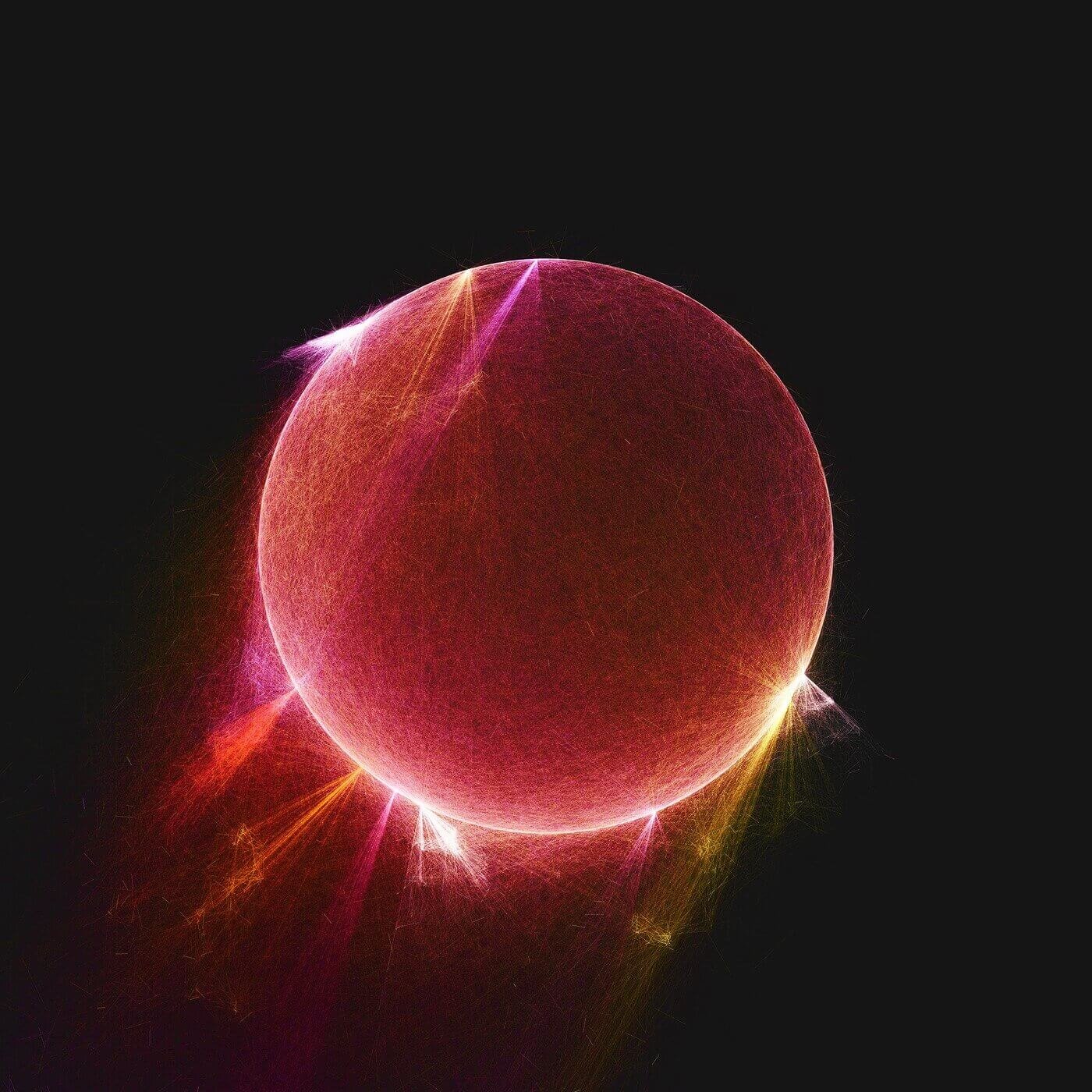
Generative art by Anders Hoff. This is part of his project "Inconvergent", which explores the complex behavior that emerges from systems with simple rules.
Hoff says interesting results can often be found betwixt the initial organized structure and the cluttered end event. He searches for enough gild to be recognizable and enough chaos to break out of ordinary forms.
"What I bask the nigh is the complex and intricate results y'all can get from a set of simple rules." — Anders Hoff
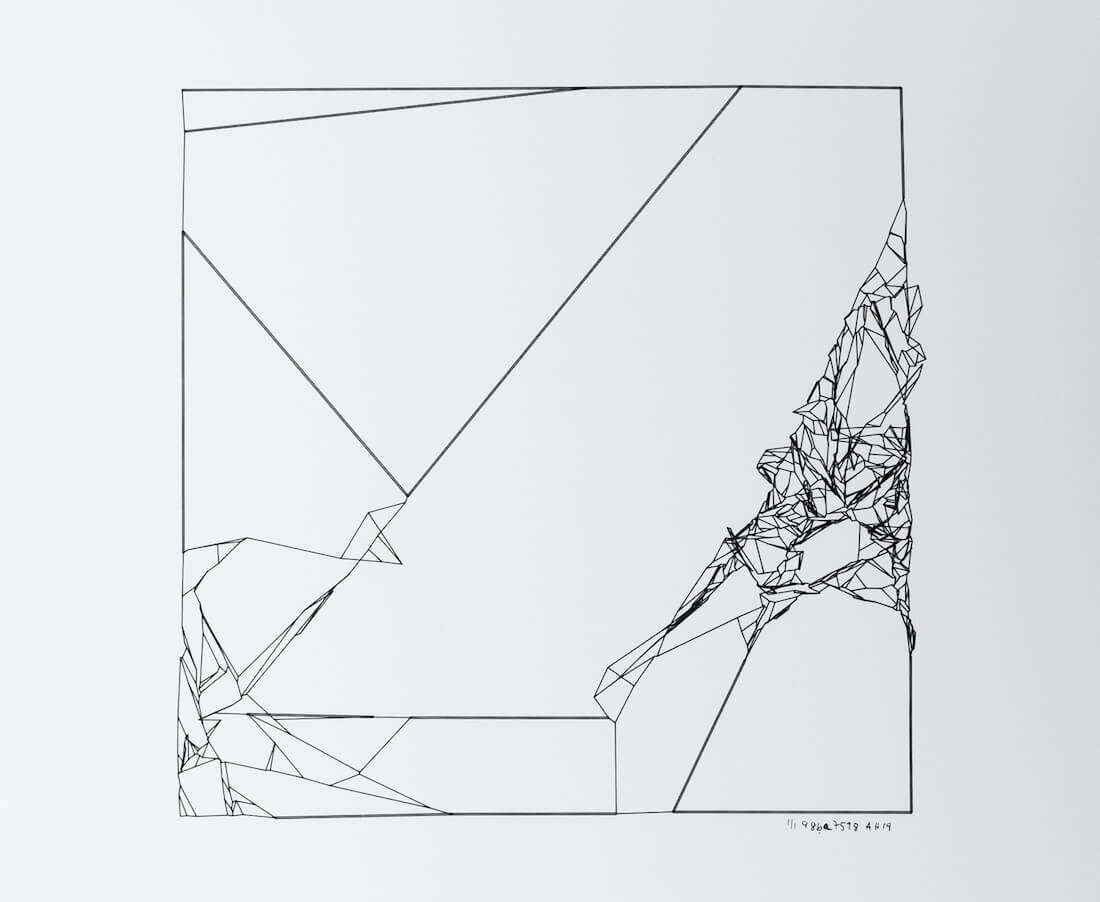
Computational plotter drawing by Anders Hoff.
We highly recommend checking out his multi-serial postal service on Generative Algorithms, which visually breaks down some of his creative process and techniques.
Generative Art Example: Marker J. Stock
Mark J. Stock is a generative creative person, scientist, and programmer who combines elements of nature and computation. His piece of work explores the tension between the natural world and its fake analogue— betwixt organic and inorganic, digital and analog.

Sprawl, by Mark J. Stock. This generative artwork begins every bit a set of rules and a world (the initial condition). Sometimes it takes millions of iterations for a pattern to emerge, depending on the complexity of the algorithm and its weather condition.
In his piece Sprawl to a higher place, Stock created a chaotic branching structure growing on a regular array of blocks. His dark growth is simulated using a surface-growth algorithm.
"The primary design element is from an algorithm called off-lattice diffusion-limited aggregation (DLA)," Stock explains. "Particles are seeded at specific locations and random walk until they strike any role of the existing construction, and then they stick in that location. The whole thing is then radiosity rendered."
One growth pattern is preconceived, designed, restrained and considered artificial. The other blueprint is impulsive, disorganized, unconstrained, and "natural." Stock explains that this contrast refers to the creeping growth of our built environment – and the trend of species to brutally capitalize on evolutionary advantages.

Ringlet 35700, a generative art work by Marker Stock. This piece is Stock'southward reflection on the hierarchy of currents and eddies in the ocean, and their niggling-understood upshot on global climate change. It is a 42"x28" digital archival inkjet print on sail (2012).
Generative Art Example: Katharina Brunner
Katharina Brunner is a generative artist and data journalist whose GitHub repository on Generative Art is a neat resources for anyone looking to get started using the programming language R.
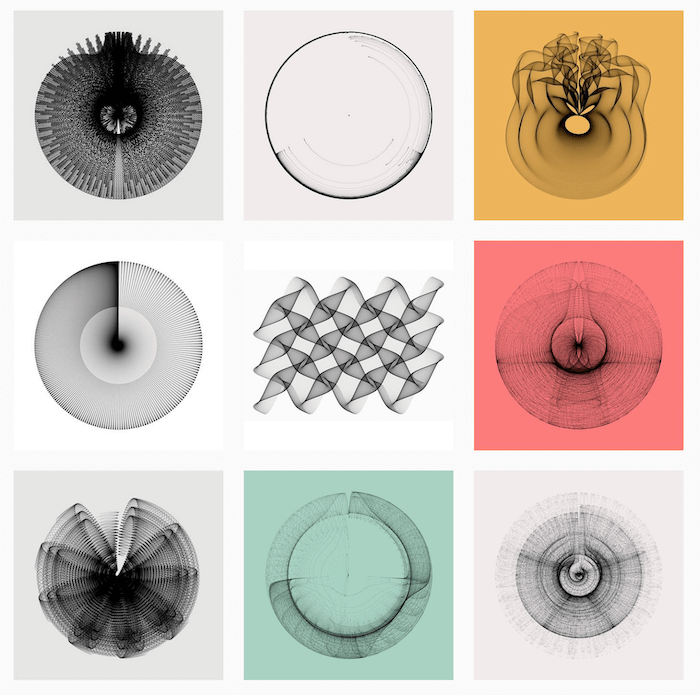
"TheR packagegenerativeart let's you create images based on many thousand points," Brunner explains. "The position of every single point is calculated past a formula, which has random parameters. Because of the random numbers, every prototype looks unlike."
You lot can explore more of her work on her website here.
Algorithm Fine art Example: Jon McCormack
Jon McCormack is an artist and professor who uses algorithms in his work to tap into the inherent wisdom of nature.
McCormack's exhibition 50 Sisters is a large-calibration installation of 1m x 1m images of computer synthesized institute-forms.
The "plants" were algorithmically "grown" from computer code using bogus evolution and generative algorithms. Each constitute-like form was derived from the starting graphic elements of oil company logos.
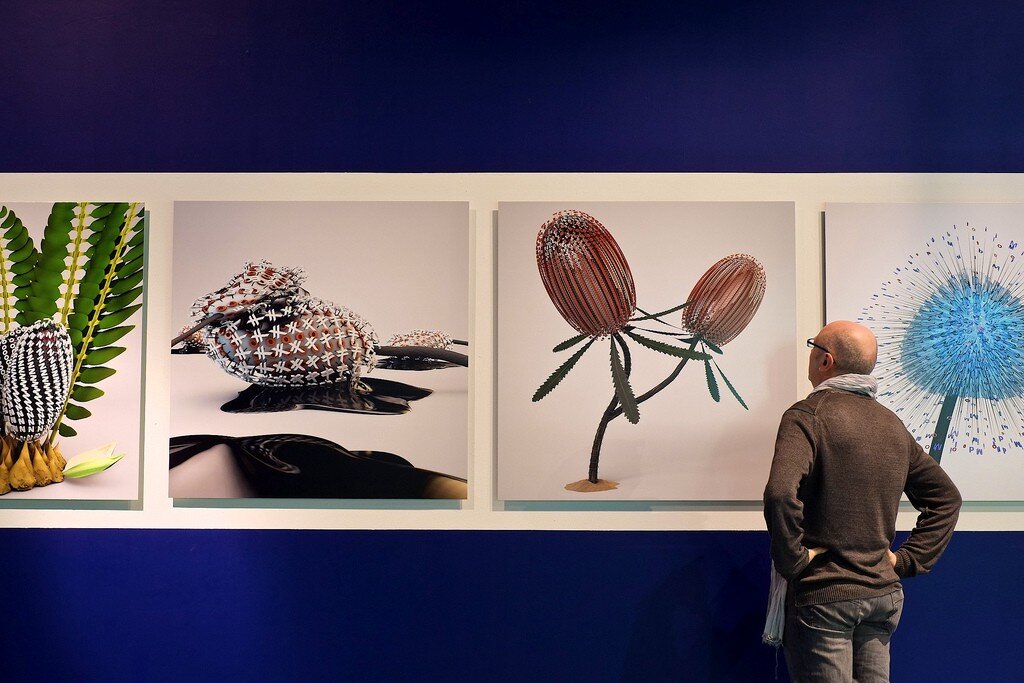
Jon McCormack, L Sisters, Series of fifty evolved digital plant images using oil visitor logos as building blocks.
The title of the work refers to the original "Vii Sisters" — a cartel of seven oil companies that dominated the global petrochemical industry and Heart East oil product from the mid-1940s until the oil crunch of the 1970s.
"I utilize evolutionary algorithms to create artificial life forms that would be almost impossible to design directly." — Jon McCormack
McCormack employs a process similar to selective breeding that evolves artful and behavioral traits. The computer is able to find nuances and complexity that he could never imagine. It acts as a artistic partner, a way to brand the unimaginable tangible. His work is a prime example of code art.
McCormack'southward Colourfield beneath is an "evolutionary ecosystem of color." In this digital work, "color agents" try to exist in a simple universe past producing colors suited to their environment. This surround is affected by the other agents and the colors they produce.
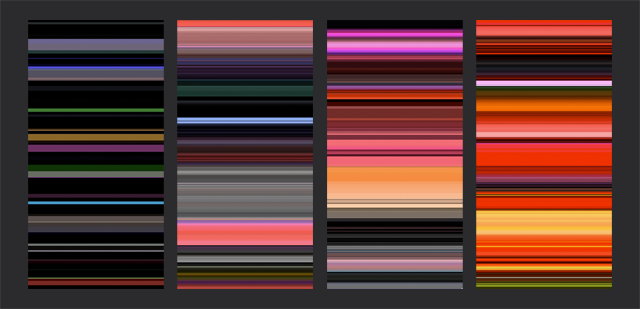
Jon McCormac's Colourfield. (An evolutionary software ecosystem).
Colors enter into complex feedback cycles, presenting an evolving palette of shifting hues. Different configurations emerge based on the strategies the ecosystem discovers for co-beingness and co-dependency.
At Monash University in Melbourne, Australia, McCormack directs SensiLab, a multidisciplinary research group studying topics such as programmable thing, interactive space, and artistic AI. McCormack also wrote the book Computers and Creativity.

NASA used evolutionary algorithms to blueprint this antennae. "This is the outset time an artificially evolved object volition have flown in space," observed Jason Lohn, who led the project to blueprint the antennas at NASA Ames Inquiry Center, in California's Silicon Valley. "The AI software examined millions of potential antenna designs before settling on a last one. The software did this much faster than any man could… through a process patterned after Darwin'due south 'survival of the fittest,' the strongest designs survive and the less capable practice not."
Scientists are starting to utilize these Darwinian techniques to heighten their ain inventiveness. For example, biochemical labs in universities and pharmaceutical companies are using evolutionary programs to pattern new molecules for use in basic inquiry and medicine. NASA used evolutionary blueprint to create an "evolved" antenna that was more constructive than human being-made ones.
Even the brains and bodies of robots can now be evolved instead of existence designed.
In this style, evolutionary algorithms are recipes programmed to generate fine art by mimicking the process of evolution, selectively "breeding" new ideas and birthing new forms throughout many generations.
What Exactly is Algorithm Fine art? (Also chosen code fine art or procedural art)?

IBM 7094 with IBM 7151 Console (1962) / Creative use of Computer Graphics by A. Michael Noll at Bell Labs (1962).
An algorithm is like a recipe. Information technology's a step-past-step method of solving a problem. And it's one of the fundamental edifice blocks of informatics.
Computers tin procedure algorithms at higher speeds and greater scales than the human brain, allowing artists to push the limits of expression in totally new means — from generative fractal art to new immersive geometries that respond to sound and motility.
This is also sometimes chosen code art or procedural fine art, because it is created by reckoner following a set of procedures laid out in lawmaking. For case, there are dozens of fractal art generators that make information technology easy to produce your own fractal images, without a background in math.
In the early 1960s, researchers at Bong Labs were pioneering the use of computers for creativity. 1 of the well-nigh active researchers was Michael Noll. In 1970 he fabricated a call to action: "What nosotros really need is a new breed of artist-computer scientist".
Algorithmic Fine art Example: Brian Eno
Noll'due south telephone call was shortly echoed by artists and musicians such every bit Brian Eno. In the tardily nineties, Eno was already using algorithmic principles to create compositions.

Generative music apps past composer Brian Eno and Peter Chilvers. Courtesy of GenerativeMusic.com.
"I've always wanted to ready things in movement that would produce far more than what I had predicted." — Brian Eno
Generative Art Instance: Mandelbrot Set
Roelof Pieters and Samim Winiger, co-founders of Artistic.ai, provide an exceptional timeline of computation creativity in their treatise On the Democratization & Escalation of Inventiveness.
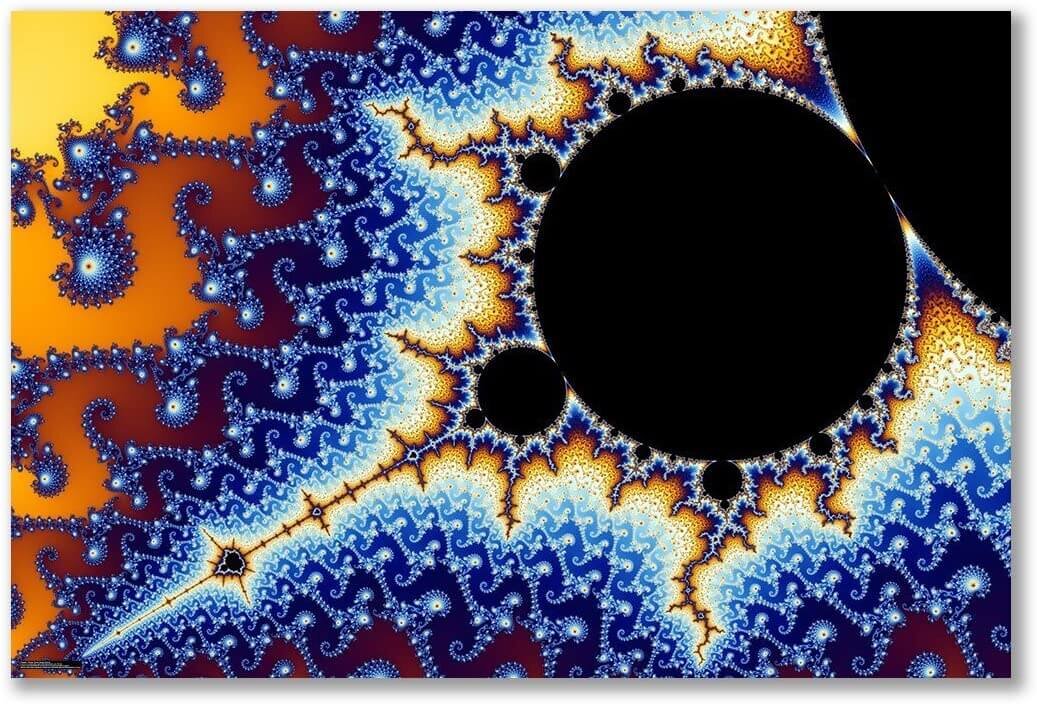
The Mandelbrot Fix is a mathematical formula that has stunning aesthetic properties when visualized. It expresses repeating patterns at all levels of calibration – no affair how much you lot zoom in or out, you tin can observe the aforementioned exact geometric patterns repeating over and over – so information technology is considered a fractal.
The pair explain how a milestone was set in 1979 past Benoit Mandelbrot, with the discovery of the Mandelbrot set.
"Mandelbrot was the first to use figurer graphics to brandish fractal geometric images. By doing and then, he was able to show how visual complexity can be created from elementary rules."
If you lot're interested in learning more than, nosotros recommend Mandelbrot'due south definitive book on the topic Fractals: Form, Gamble and Dimension.
Fractals had a profound effect on our perception of inventiveness and machines. The discovery led many to ask "can a computer/algorithm be creative?" and inspired scientists, artists and engineers to experiment with creativity.

Benoit Mandelbrot / Mandelbrot Fractal (1979)
This event helped begin what Pieters and Winiger phone call the code art revolution, which continues today.
Interactive Generative Art Software: Electric Sheep (Scott Draves)
Scott Draves is a pioneering software artist best known for creating Electric Sheep, a collective intelligence consisting of 450,000 computers and people that uses mathematics and genetic algorithms to create an space abstruse animation.
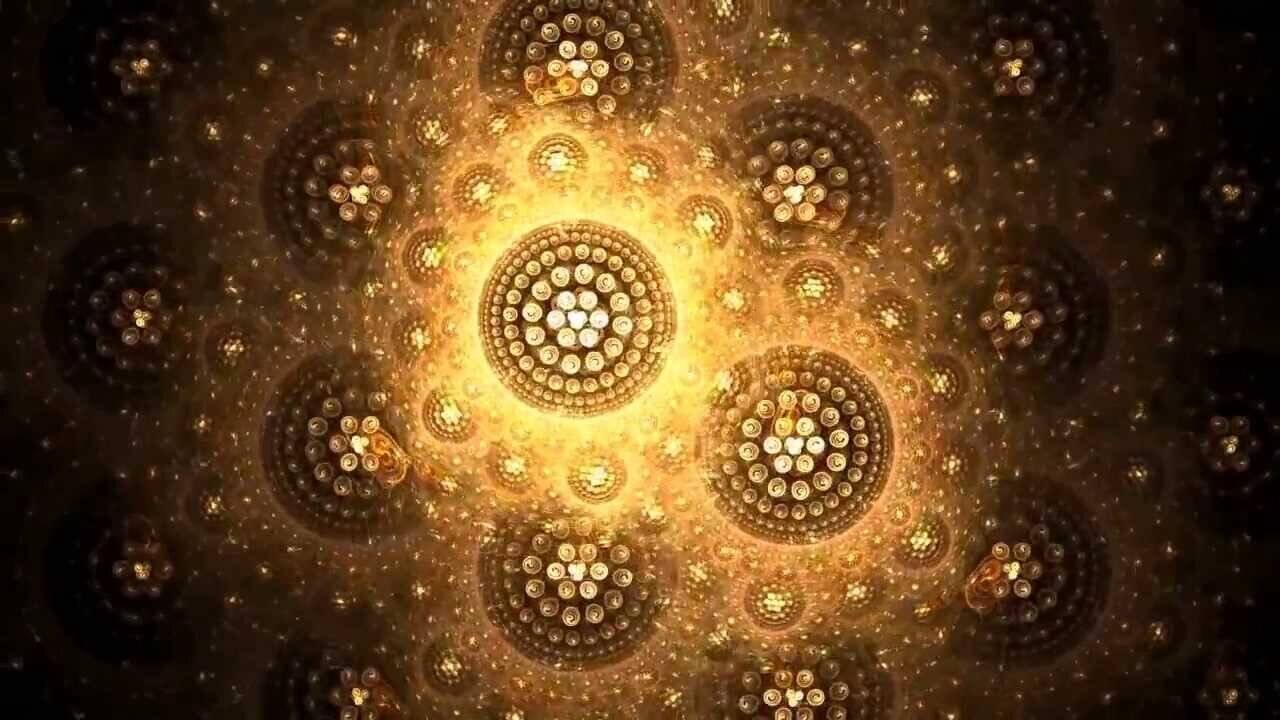
We consider the blithe output of Electric Sheep some of the best fractal and algorithmic art out there.
Draves earlier work called Bomb was ane of the first interactive software artworks (1994) and too the starting time Open Source code artwork.
Interactive Generative Fine art Software: PANORAMICAL (Fernando Ramallo)
PANORAMICAL is a new kind of video game about discovering beautiful moments.
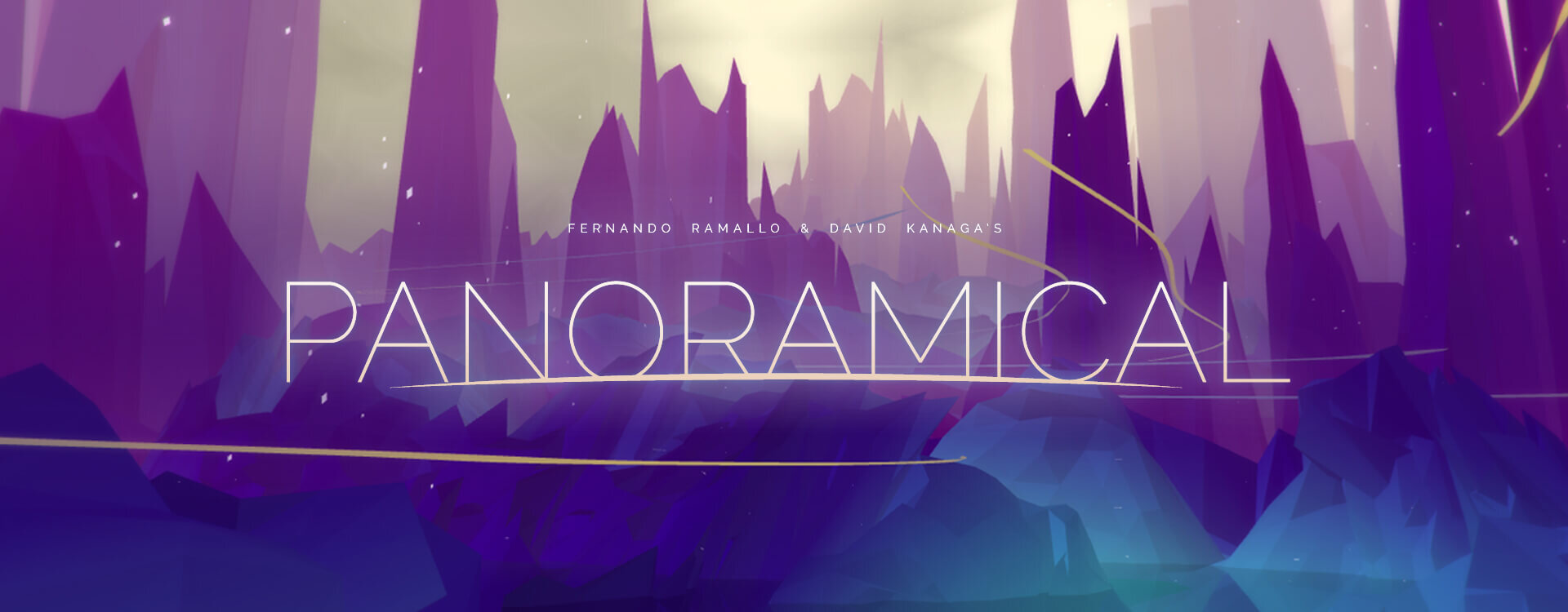
From the moment it begins, you're immersed in an audiovisual globe that responds to your movements. The game lets yous explore interactive, generative digital landscapes that change based on your input, and embarking on a visual and musical gamble.
Instead of controlling an avatar, you utilize a game controller, MIDI controller, or mouse-and-keyboard combo to shape both the world and the music together. Worlds are algorithmically combined; the sound and visual fabric are sewn together with code.
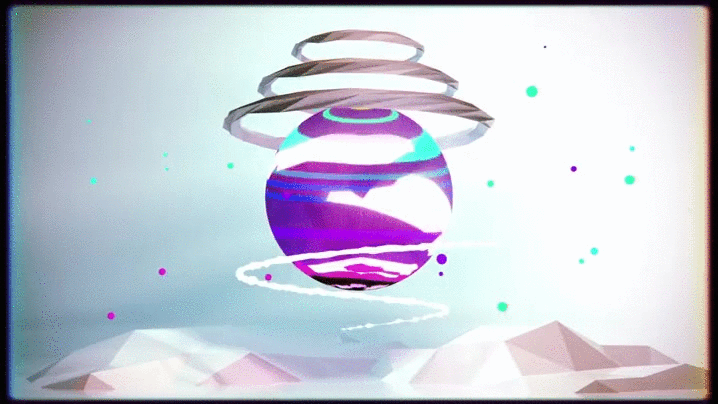
A scene from PANORAMICAL, an interactive generative fine art game created by Fernando Ramallo and David Kanaga.
Fernando Ramallo, the game'south creator, explains how connecting multiple sensory variables in the game to your actions is at the heart of the feel:
"There are plenty of things happening at once as you motility each slider — the objects of the scene and the sound loops are modified at the same fourth dimension. For instance, nosotros would bind the speed of the scene and the pitch of a looping sample, so when you lot change it, information technology feels like the audio is tightly bound to the scene's speed. It'due south layers and layers of little interactions similar that."
The game is a scenic creative experience spanning 18 audiovisual dimensions. 2 days after launching, someone fifty-fifty fabricated their own touch interface and projected information technology on a 53-human foot shipping container.
Interactive Generative Fine art: Silk
Silk is a generative fine art app that makes information technology easy to create stunning designs with a few swipes of your finger. You tin can download information technology on Apple tree's app store.
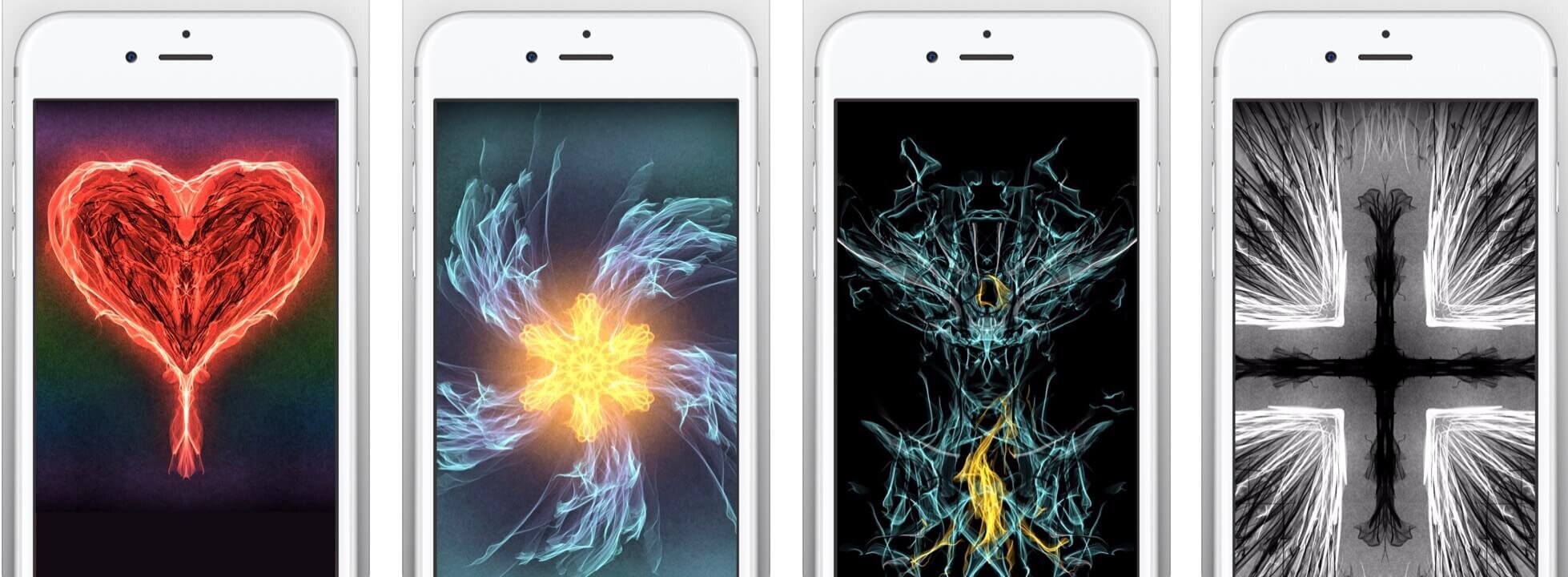
Silk's interactive nature is a great example of how simple rules – such as including symmetrical mirroring of the lines you draw – can instantly transform basic input into much more elaborate, complex and sophisticated forms.
Generative Design
Generative tools are not simply being used to create art, architecture and music. They're likewise being used to design physical products, video games, and other objects meant to exist used in everyday life.
Generative Design Example: Procedural Modeling
Some organizations that crave a lot of artistic assets (like video game graphics) are using a method called Procedural Modeling to apace generate ideas, saving time and money.
Major video game studios spend hundreds of millions of dollars to develop a single game. That's more than most flick budgets.
I of the unreasonably high costs are the assets — the things you can run across, hear and interact with in the game.
The paradigm below shows how a single scene in a video game can run an estimated cost of $200,000 purely from the objects you tin can meet.
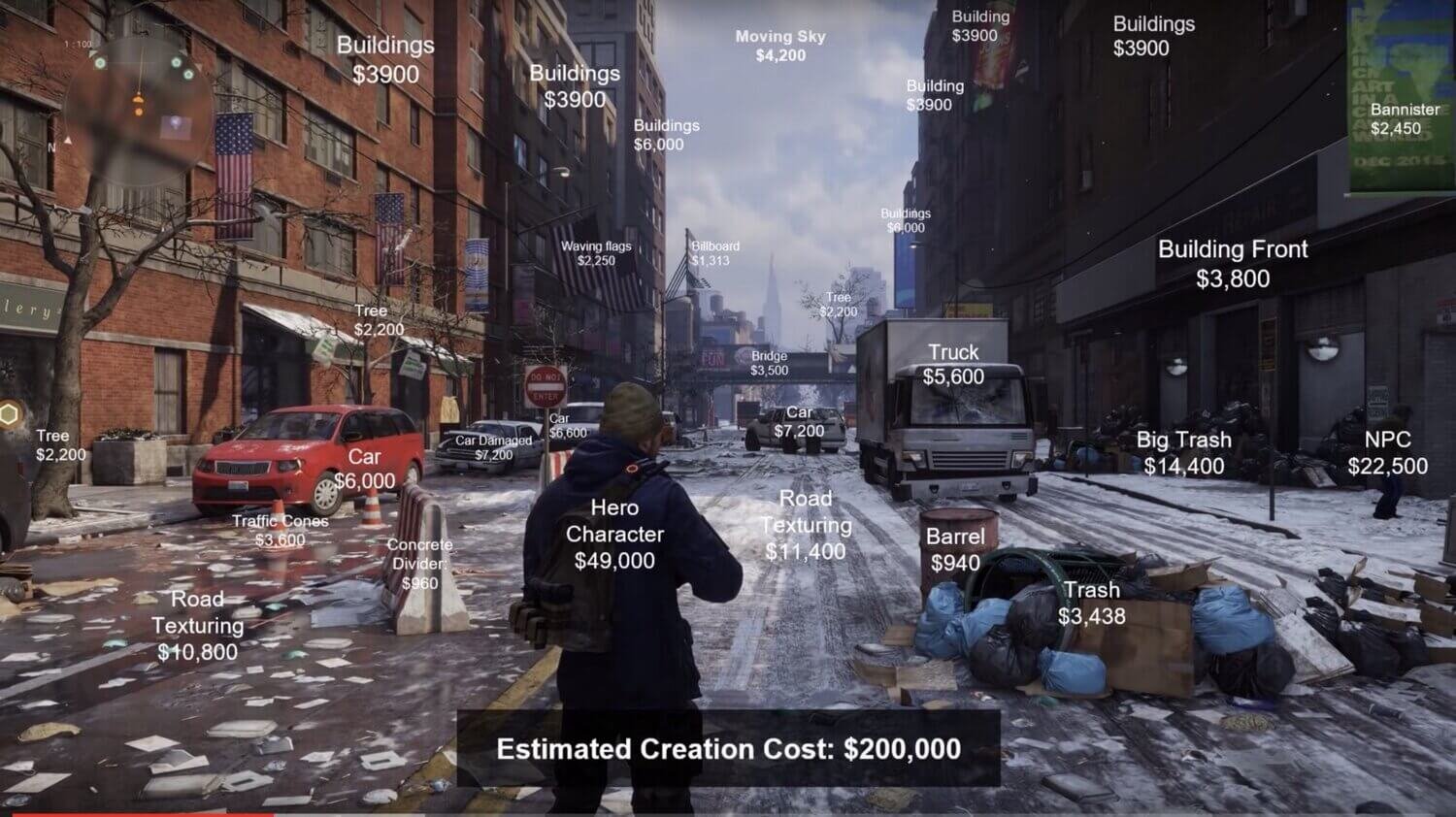
But what if you could teach a car the parameters of what each object should look like — a building has a range of windows, floors and doors — and let it do that hard work of generating options? Could it code art and produce effective designs if you gave it the correct specifications?
That is the promise of procedural modeling, which can save hundreds of hours of tedious manual piece of work. Anastasia Opara, who teaches a course on the process, shows an case below. First she defines what a building should look like within ranges — and then her computer self-generates options.
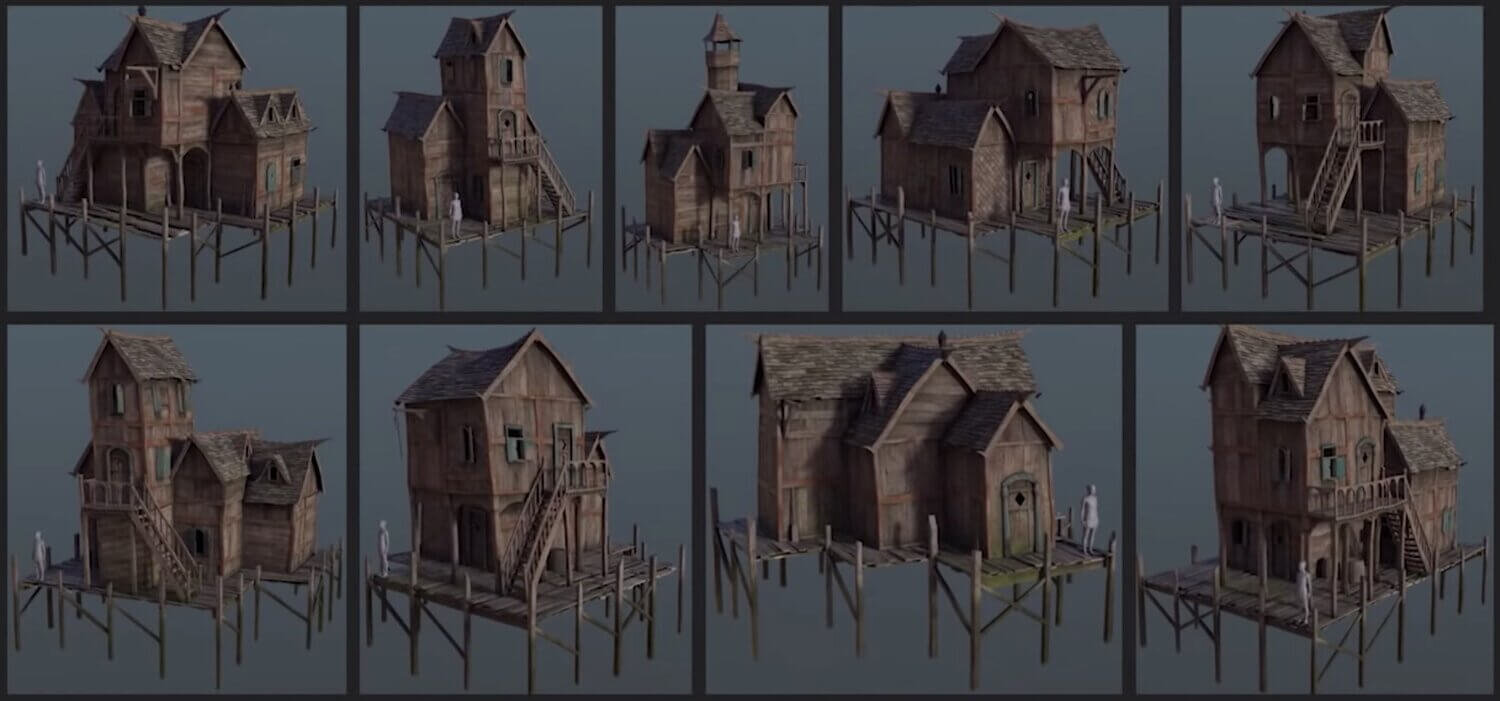
A series of self-generated buildings fabricated from parameters. By Anastasia Opera.
Initially she idea the procedural aspect would take away the creative attribute of the process. But she was surprised to discover that it forced her to understand what makes something look proficient. By defining explicitly what that looks like for a given object, she deepened her own creative agreement of how to create. The process of understanding and generating meaningful procedural art was a deeply creative act.
The output includes all kinds of shapes she would never accept thought of, providing new building blocks to interruption out of her own mold.
Generative Design Software Example: AutoDesk

A bike created with Generative Design that reduces the number of parts, and creates a lighter and stronger body.
Generative Creation tools become beyond art into the realm of design. By lowering the time between intention and realization, these tools are leading to a myriad of new forms, functions and aesthetics.
Take a look at the image belwo. The chair on the left was designed by a human. Using Autodesk's generative design software, it can be adjusted to optimize for variables similar lighter weight. The chair on the right shows a fully generatively-designed structure that is three.5 times less heavy than the human pattern.
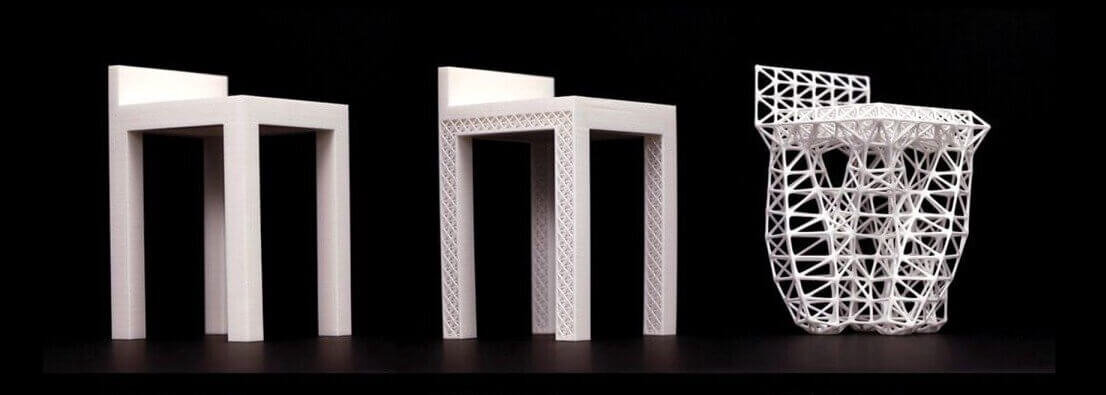
Generating chairs with Autodesk. Set the parameters, then watch it produce novel designs that autumn inside your specifications.
Generative creation tools have already been used to generate fashion items, paintings, music, poems, vocal lyrics, journalistic news articles, article of furniture, image and video effects, industrial design, comics, illustrations, architecture and more.
Dreamcatcher is a generative design system that assists designers in defining their pattern problem through goals and constraints. This information is used to synthesize alternative design solutions that run into the objectives.
Designers are able to explore trade-offs betwixt many alternative approaches and select design solutions to manufacture.
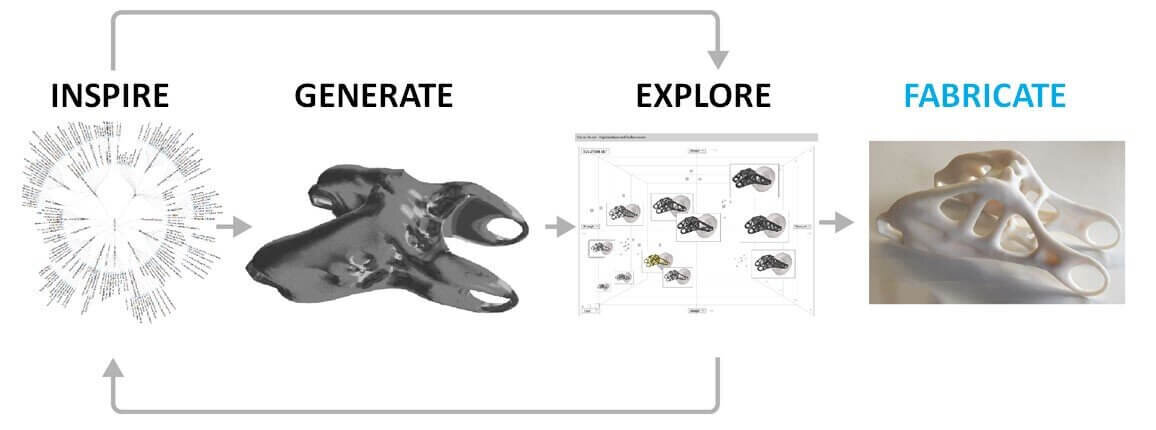
The process of using Autodesk's Dreamcatcher, courtesy of Autodesk.
Autodesk'southward "Dreamcatcher" allows designers to input blueprint objectives including functional requirements, material, manufacturing method, functioning criteria and cost restrictions. The system so evaluates and presents a vast number of designs satisfying the requirements that can be tweaked and finalized.
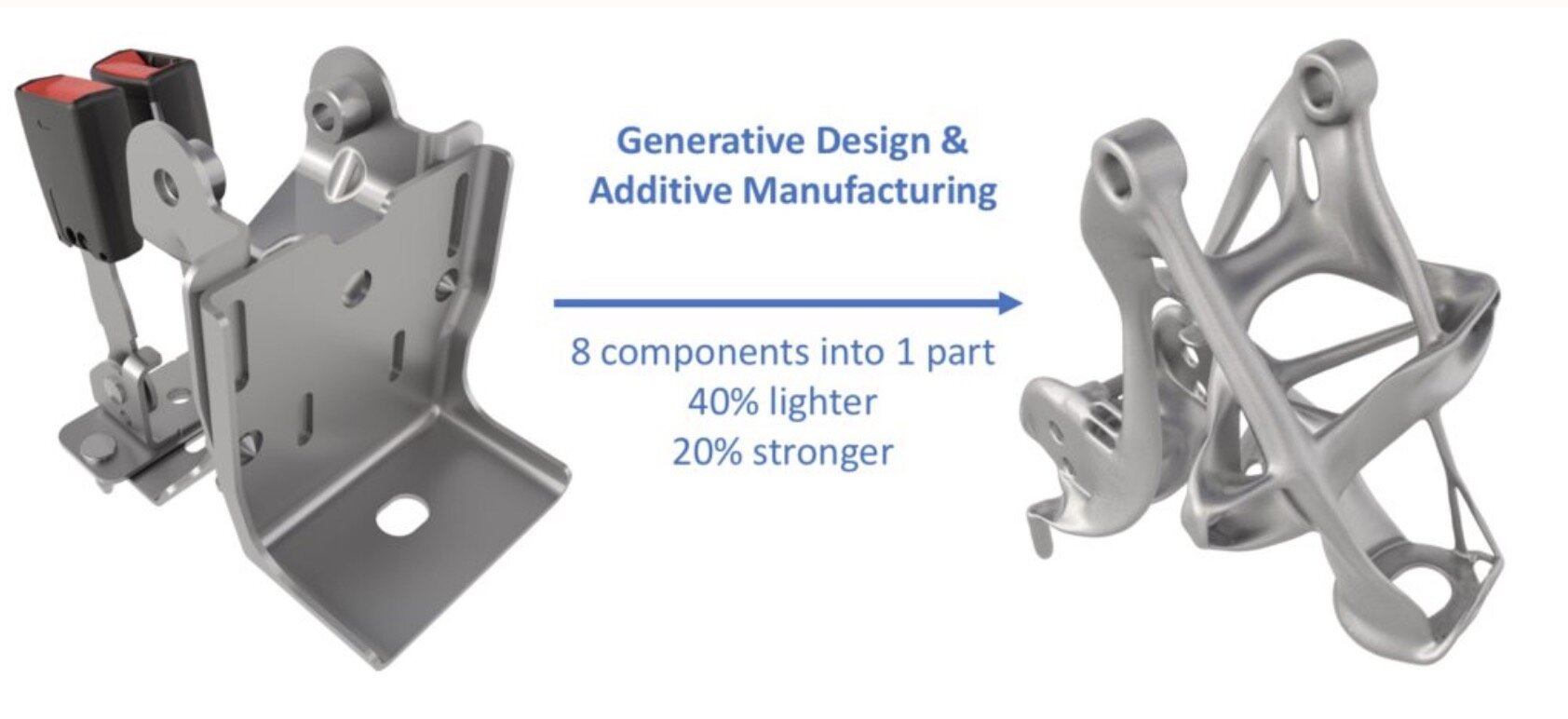
GM collaborated with AutoDesk'due south Generative Blueprint tools to create a seat bracket that was lighter, stronger, and consolidated several pieces into a single 3D-printed component.
What will the next 100 years expect like as new tools like these expand our creative potential?
Information technology is incommunicable to know. But we are confident that cut border generative software will aid us produce new forms of fine art, design and compages long into the future.
Best Generative Fine art Software:
There are many tools, programs, frameworks and languages that make it easy to starting time creating your own algorithmic art. We've listed a few of the more popular ones below to assist go y'all started.
-
Processing - Our staff pick. This is a powerful programming language and development surroundings for code-based art.
-
openFrameworks - A popular open source C++ toolkit for generative and algorithmic fine art.
-
Cinder - An open source C++ library for creative coding.
-
C4 - An open source iOS framework for generative art.
-
Unity - A powerful game engine that tin help with generative art and large-scale installations.
-
PlayCanvas - A collaborative WebGL engine that works in existent-time.
-
hg_sdf - A GLSL library for signed distance functions.
-
HYPE - A drove of classes that does a lot of heavy lifting with minimal code required.
-
nannou - An open up source framework for creative coding in Rust.
-
thi.ng - An open source drove of Clojure and ClojureScript pattern tools.
-
PixelKit - An open source Swift framework for live graphics.
-
OPENRNDR - An open source Kotlin library for generative art.
-
Phaser - An HTML5 framework for games that uses Canvas and WebGL.
-
Canvas-sketch - An HTML5 framework for generative artwork in JavaScript and your browser.
Best Generative Art Laptops:
Generative art tin crave a lot of processing power to render apace. So we rounded upwardly and compared some of the best laptops for the job. Our comparison focuses on laptops built for for machine learning, which is a similar field that requires high performance GPUs, just like generative art.
Best Generative Fine art Books:
The best fashion to learn generative fine art is to attempt it yourself. Nosotros honey Daniel Shiffman's guide called The Nature of Lawmaking. Information technology provide real examples, clear step-by-step lessons, actual code excerpts, and fresh thinking on how to create your ain generative fine art.
Frequently asked questions most generative art:
How are generative tools changing the way we make art?
-
Assistive creation systems are making a wide range of creative skills more accessible. People without detail artistic skills will gain new capabilities, empowering novice artists and lowering the barrier to entry for new work. For example, apps like HumOn and Humtap allow non-musicians hum into their smartphones and quickly build a song around it. These and many other songwriting assistants including Jukedeck, Amper Music, Aiva, Melodrive, Amadeus Code, Alysia, Mubert, Endel, and Boomy are making it easier for anyone to create, in a similar way to how Instagram opened upward photography to hundreds of millions of non-photographers.
-
Open up source software is allowing anyone with an Internet connexion to expand their artistic toolkit for free. That means the cost of inventiveness is going down — a good thing for everyone. For instance, openFrameworks is an open up source C++ toolkit for creative coding, and Magenta is a research projection exploring auto learning in art and music.
-
Open source information sets are providing computational artists with the raw fabric they tin use to create new works or tools. For example, Google'south Open Images Dataset contains 9 million images that have been hand-labeled with bounding boxes annotating every image within them. Wide-ranging open source datasets on Kaggle range from thousands of classifications of urban sounds to paintings from the l about influential artists of all time. The Fine art Constitute of Chicago as well released 50,000 high-resolution images from their collection.
-
Generative creation systems are revealing brand new forms and ideas we never could have imagined. They are opening upward a whole new realm of options by shifting artistic focus to creating a process rather than an end event. They volition inspire a new generation of artists using tools to become more than creative and more of their time— leveraging computers to do the legwork and create near infinite variations in a given solution space.
-
Procedural modeling is reducing the price of generating images, video, sound, and other assets required for multimedia. More time will be spent defining a range of possible outcomes, deepening our understanding of what makes something beautiful, and decreasing time wasted on grunt work. This volition decrease the cost and time needed to create assets for film, video games, and other digital media. It will likewise reward skillsets that can create intelligent systems, not just cute end results.
-
Artificially intelligent tools volition learn from united states and become collaborators, suggesting ideas in real-fourth dimension, helping u.s.a. maintain a flow state and decreasing writer'south cake. They volition exist a spark for man creativity, rather than a simple replacement for it.
-
General Adversarial Networks are making information technology possible for machines to learn about a dataset and to then generate extremely realistic variations in a similar style. Expect to run across creative and imaginative uses of this engineering science expand as information technology becomes more mainstream.
-
Artistic Adversarial Networks are making information technology possible for machines to inject novelty into their outputs and to even learn what kind of novelty is useful over time. That ways we'll be seeing much more autonomously creative programs developing soon.
-
Evolutionary algorithms are making it possible to encode the fundamental processes of nature into the creation of art, allowing creatives to tap the wisdom of the ages and manifest information technology in inspiring new means.
-
Educational platforms like YouTube, LinkedIn Learning (formerly Lynda) are making it easier to learn new skills. No idea how to animate? Just Google "learn how to animate" and you'll observe tons of great tutorials.
-
As these trends are increasingly converging, they are accelerating the skill acquisition time from novice to expert. This is leading to what has been called the "democratization of creativity."
Who are some of the best generative artists?
If you're interested in checking our some of the more popular code artists, nosotros recommend:
-
Jared Tarbell (sometimes misspelled as Jared Tarbel)
-
Matt Pearson
-
Michael Hansmeyer
-
Anders Hoff
-
Marker J. Stock
-
Jon McCormack
-
Brian Eno
-
Manoloide
-
Casey Reas
-
Frieder Nake
-
Michael Noll
-
Georg Nees
-
Lillian Schwartz
-
Grace Hertlein
-
Muriel Cooper
-
John Maeda
-
Ben Fry
-
Scott Draves
-
Fernando Ramallo
-
Anastasia Opera
-
Sol Lewitt
-
Daniel Shiffman
-
Lauren McCarthy
-
Joshua Davis
-
Robbie Barrat
-
Mario Klingemann
What are the other names for generative art?
This field has lots of names, which can be confusing. It is sometimes chosen code art, algorithmic fine art or procedural art. Information technology as well falls within the larger category of computer fine art (works made with a estimator), and can sometimes be considered democratic art (works made without human intervention).
Whatever y'all call it, there'southward no denying that information technology's a motion that is shaping art and design.
How to brand generative fine art?
The best fashion to commencement creating generative fine art is to follow a step-by-step tutorial. We recommend starting with one of the following tools: Processing, OpenFrameworks, R or JavaScript (p5.js). Just Google "generative art tutorial" to discover a tutorial that inspires y'all.
Where to acquire generative fine art?
For beginners to learn generative art, we recommend checking out the following resources: The Coding Railroad train, Three.js 101, Shaders: A primer, and WebGL Tutorials. These step-by-step tutorials volition walk you through the process of making your own algorithmic art.
Tin I create generative art without code?
You don't necessarily need to know lawmaking at all. Endeavour Googling one of the generative art makers above to get started.
Where can I find generative art lawmaking examples?
If you're familiar with programming, try Googling "generative art code" for some examples. Sites similar Codepen and others oftentimes provide complete walkthroughs. You can also search Twitter for hashtags like #GenerativeArt and #GenerativeDesign.
What's the best generative art course or form?
We're in the process of vetting several courses to larn how to make generative art. When we're done taking the classes ourselves, we'll publish a guide comparing them for yous.
What kind of mediums can you make with generative fine art?
Whatsoever medium you lot can imagine – paint, analogy, compages, poetry, music, drawing, digital art, data visualization, line art, even trip the light fantastic toe.
Where can I buy generative art?
We're in the process of finding the all-time places to buy generative fine art. In the concurrently, nosotros recommend trying Etsy, Artsy and Society6. They all have solid generative artworks for sale.
Source: https://aiartists.org/generative-art-design
0 Response to "How to Make Digital Art Almost 3d How to Make 2d Digital Art Almost 3d"
Post a Comment